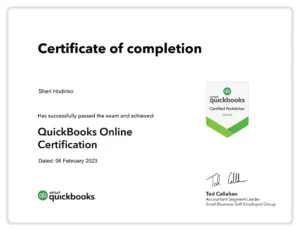
The expanded accounting equation can allow analysts to better look into the company’s break-down of shareholder’s equity. The revenues and expenses show the change in net income from period to period. Stockholder transactions can be seen through contributed capital and dividends. Although these numbers are basic, they are still accounting equation calculator useful for executives and analysts to get a general understanding of their business. The balance sheet is also known as the statement of financial position and it reflects the accounting equation. The balance sheet reports a company’s assets, liabilities, and owner’s (or stockholders’) equity at a specific point in time.
What is the Expanded Accounting Equation?

If the total liabilities calculated equals the difference between assets and equity then an organization has correctly gauged the value of all three key components. In this article, we take a deep dive to understand the core attributes of the accounting equation, its role in day to day transactions and how it plays a crucial role in accurate financial reporting. Short and long-term debts, which fall under liabilities, will always be paid first. The remainder of the liquidated assets will be used to pay off parts of shareholder’s equity until no funds are remaining. The Accounting Equation is a vital formula to understand and consider when it comes to the financial health of your business. The accounting equation is a factor in almost every aspect of your business accounting.
Accounting Equation Formula and Calculation

For example, if a company becomes bankrupt, its assets are sold and these funds are used to settle its debts first. Only after debts are settled are shareholders entitled to any of the company’s assets to attempt to recover their investment. It can be defined as the total number of dollars that a company would have left if it liquidated all of its assets and paid off all of its liabilities. Using Apple’s 2023 earnings report, we can find all the information we need for the accounting equation.
- For example, if the total liabilities of a business are $50K and the owner’s equity is $30K, then the total assets must equal $80K ($50K + $30K).
- Here we can see the list of all assets that have been reported on Hershey company balance sheet for 2023.
- The accounting equation asserts that the value of all assets in a business is always equal to the sum of its liabilities and the owner’s equity.
- With the accounting equation expanded, financial analysts and accountants can better understand how a company structures its equity.
Formula(s) to Calculate Accounting Equation
The CFS shows money going into (cash inflow) and out of (cash outflow) a business; it is furthermore separated into operating, investing, and financing activities. Working capital indicates whether a company will have the amount of money needed to pay its bills and other obligations when due. Get instant access to video lessons taught by experienced investment bankers. Learn financial statement modeling, DCF, M&A, LBO, Comps and Excel shortcuts. It’s quite possibly the most important and most well-known formula in the world of accounting. The global adherence to the double-entry accounting system makes the account-keeping and -tallying processes more standardized and foolproof.
Shareholders’ Equity
The various economic events that alter shareholders’ equity represent the profits and losses that appear in the shareholders’ equity section of the balance sheet. The accounting equation will always remain in balance if the double entry system of accounting is followed accurately. There are different categories of business assets including long-term assets, capital assets, investments and tangible assets. They were acquired by borrowing money from lenders, receiving cash from owners and shareholders or offering goods or services. We can expand the equity component of the formula to include common stock and retained earnings.

Related Resources
Contributed capital and dividends show the effect of transactions with the stockholders. The difference between the revenue and profit generated and expenses and losses incurred reflects the effect of net income (NI) on stockholders’ equity. Overall, then, the expanded accounting equation is useful in identifying at a basic level how stockholders’ equity in a firm changes from period to period. The accounting equation uses total assets, total liabilities, and total equity in the calculation. This formula differs from working capital, based on current assets and current liabilities.
- Their share repurchases impact both the capital and retained earnings balances.
- A debit refers to an increase in an asset or a decrease in a liability or shareholders’ equity.
- Balance Sheets shown above and the Income Statement and detailed Statement of Stockholder’s Equity in this section.
- Double Entry Bookkeeping is here to provide you with free online information to help you learn and understand bookkeeping and introductory accounting.
- With that being said, no matter how the formula is laid out, it must always be balanced.
In other words, we can say that the value of assets in a business is always equal to the sum of the value of liabilities and owner’s equity. The total dollar amounts of two sides of accounting equation are always equal because they represent two different views of the same thing. Under the accrual basis of accounting, expenses are matched with revenues on the income statement when the expenses expire or title has transferred to the buyer, rather than at the time when expenses are paid.
Adam Hayes, Ph.D., CFA, is a financial writer with 15+ years Wall Street experience as a derivatives trader. Besides his extensive derivative trading expertise, Adam is an expert in economics and behavioral finance. Adam received his master’s in economics from The New School for Social Research and his Ph.D. from the University of Wisconsin-Madison in sociology.
- It provides stakeholders an effective way to analyze the financial position of the firm.
- The expanded accounting equation is a more detailed version of the common accounting equation.
- In conclusion, the accounting equation is a fundamental concept in accounting that is used to understand and analyze the financial position of a business.
- Now that you are familiar with some basic concepts of the accounting equation and balance sheet let’s explore some practice examples you can try for yourself.
- Creditor AssessmentBy utilizing the extended formula, creditors and lenders can assess a company’s financial resource allocation and management over an extended period of time.
- He has worked as an accountant and consultant for more than 25 years and has built financial models for all types of industries.